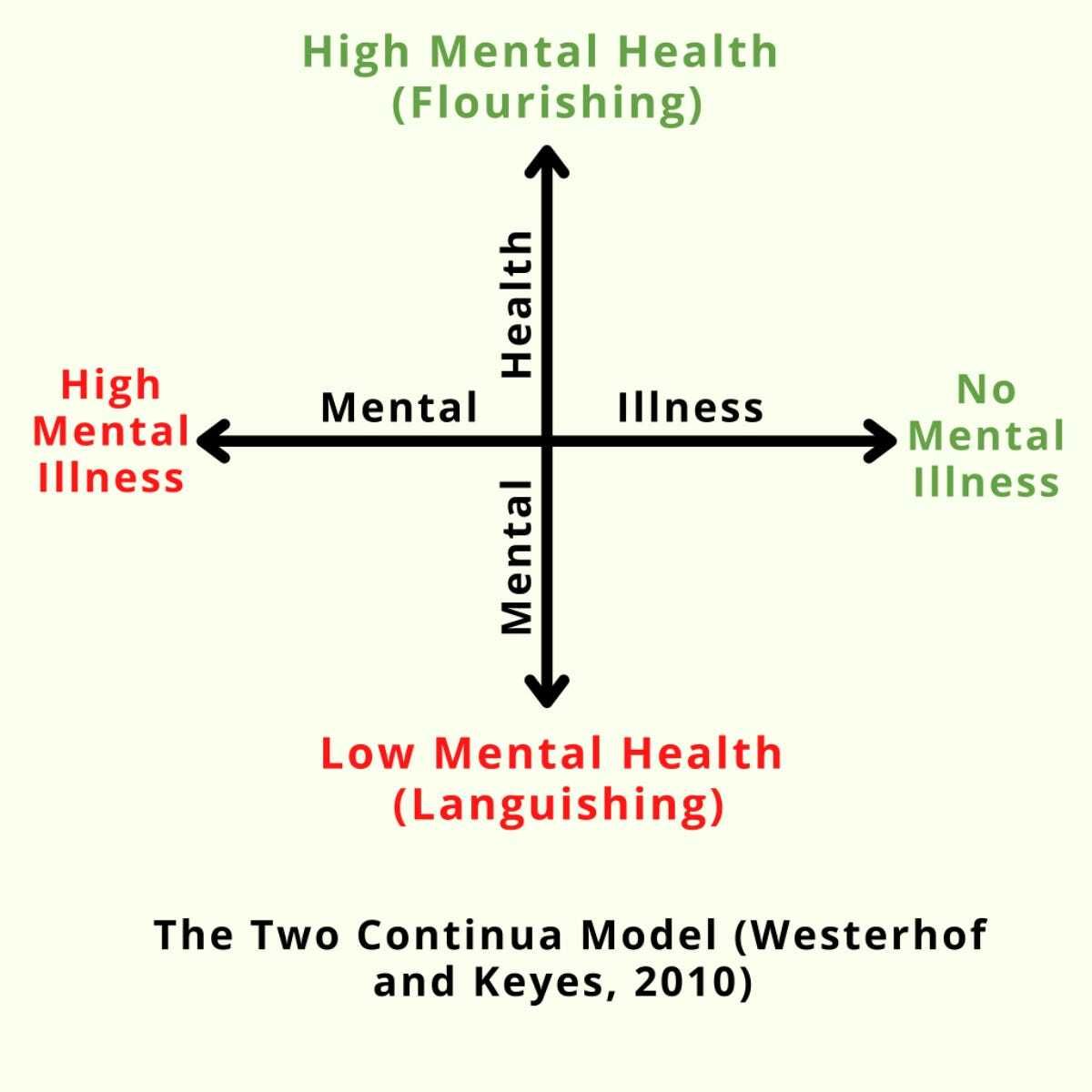
When I was a child, and even when I was a young man, any consideration of the workings of the mind was centred on dysfunction.
The focus was always on what at that time were regrettably considered to be somewhat shameful conditions,- like depression, anxiety or psychosis.
So, the whole idea of psychology always invoked a sense of fear and unease for me.
Fortunately, mental health is now mostly regarded as just another part of our overall health and wellbeing, and we talk openly sensibly about mental wellness and how it can be maintained.
And much of this reframing of the way that we think about our minds, and how they work, can be attributed to those visionary psychologists who brought us positive psychology in the latter part of the 20th century.
And positive psychology was such an inspiring idea for me that I was inspired to study psychology, rather than fear it.
Introduction to positive psychology
Positive psychology is a branch of psychology that focuses on the study of conditions and processes that contribute to the flourishing or optimal functioning of individuals, groups, and institutions.
Unlike traditional psychology, which often concentrates on mental illness and dysfunction, positive psychology aims to understand and promote strengths that enable people to thrive. The field is grounded in the belief that cultivating positive experiences, traits, and institutions can lead to a more meaningful, fulfilling, and self-actualised life.
The term “positive psychology” was first used by Abraham Maslow in 1954, though the field itself only gained significant momentum in the late 20th century.
Psychologists like Martin Seligman and Mihaly Csikszentmihalyi played crucial roles in developing the scientific study of positive human functioning, steering the focus away from pathology and towards well-being and happiness.
Today, positive psychology continues to expand its influence, particularly in areas such as coaching and self-development, where its principles are applied to enhance individual and collective well-being.
Historical background and theoretical foundations
The roots of positive psychology can be traced back to humanistic psychology, particularly the works of Abraham Maslow and Carl Rogers.
Maslow, renowned for his hierarchy of needs, introduced the concept of self-actualisation, which represents the realisation of one’s full potential. He emphasised the importance of focusing on the positive aspects of human nature and the conditions that foster growth, creativity, and fulfilment.
Carl Rogers, another influential figure, contributed to positive psychology through his person-centered approach, which emphasized the importance of empathy, unconditional positive regard, and the therapeutic relationship in fostering self-growth. His work laid the groundwork for understanding how positive interpersonal relationships contribute to individual well-being.
The ‘official birth’ of positive psychology as a distinct field occurred in 1998 when Martin Seligman, then president of the American Psychological Association, made it the theme of his presidency.
Seligman, along with Mihaly Csikszentmihalyi, argued for a shift in psychology’s focus—from merely addressing mental illness to studying what makes life worth living.
Their work highlighted the importance of positive emotions, engagement, relationships, meaning, and accomplishment in achieving well-being—a framework now widely known as PERMA.
The three pillars of positive psychology
Positive psychology is built upon three core pillars:
positive subjective experiences,
positive individual traits, and
positive institutions.
These pillars provide a comprehensive framework for understanding and enhancing well-being.
Positive subjective experiences
Positive subjective experiences refer to the feelings of happiness, pleasure, satisfaction, and other positive emotions that contribute to an individual’s overall well-being. Research has shown that cultivating positive emotions not only enhances life satisfaction but also serves as a buffer against mental health issues.
According to the broaden-and-build theory proposed by Barbara Fredrickson, positive emotions broaden an individual’s thought-action repertoire, leading to the development of lasting personal resources such as resilience and social connections.
Positive Individual Traits
Positive individual traits encompass the strengths, talents, and values that define a person’s character.
Identifying and nurturing these traits is central to personal growth and self-development.
The study of character strengths, led by researchers like Christopher Peterson and Martin Seligman, has identified 24 strengths, such as courage, kindness, and wisdom, that are universally valued across cultures.
By focusing on these strengths, individuals can enhance their well-being, achieve greater success, and contribute positively to their communities.
Positive institutions
Positive institutions or systems are environments that foster the development of positive traits and experiences in individuals. These include families, schools, workplaces, and communities that create conditions conducive to well-being.
Positive institutions are characterised by practices that promote fairness, inclusiveness, and the well-being of their members. For example, workplaces that emphasise employee strengths, provide opportunities for growth, and support work-life balance are more likely to have engaged and satisfied employees.

The imperatives of positive psychology
Positive psychology identifies four major imperatives that are essential for well-being: rising to life’s challenges, engaging with others, finding fulfilment in creativity and productivity, and looking beyond oneself to help others.
Rising to life’s challenges
One of the central themes in positive psychology is resilience—the ability to bounce back from setbacks and adversities. Resilience is not just about surviving difficult times but thriving despite them.
Positive psychology provides tools and strategies, such as cognitive-behavioral techniques and mindfulness practices, to help individuals build resilience and turn challenges into opportunities for growth.
Engagement and relationships
Engagement refers to the deep involvement and absorption in activities that are both challenging and enjoyable. This state of flow, described by Csikszentmihalyi, is associated with high levels of satisfaction and fulfillment. In addition to individual engagement, positive psychology emphasizes the importance of relationships. Strong social connections are one of the most consistent predictors of happiness and well-being. Positive psychology interventions often focus on improving communication, empathy, and relational skills to enhance the quality of interpersonal relationships.
Creativity and productivity
Finding fulfilment through creativity and productivity is another key imperative of positive psychology. Engaging in meaningful work, pursuing creative endeavours, and setting and achieving goals contribute to a sense of accomplishment and purpose.
This aspect of positive psychology aligns closely with the concept of self-actualisation, where individuals strive to realise their full potential through their work and creative pursuits.
Beyond the self
Finally, positive psychology encourages individuals to look beyond themselves and contribute to the well-being of others. Altruism, volunteering, and acts of kindness not only benefit others but also provide a sense of meaning and satisfaction to the giver.
This focus on prosocial behaviour is linked to greater life satisfaction and the development of wisdom over time.
Positive psychology in coaching
Positive psychology has found a natural application in the field of coaching, where its principles are used to help individuals achieve their personal and professional goals.
Coaching psychology, which draws heavily on positive psychology, emphasises the identification and enhancement of clients’ strengths, the cultivation of positive emotions, and the development of resilience.
Coaches use positive psychology frameworks, such as PERMA, to help clients set and achieve meaningful goals, improve their well-being, and navigate challenges effectively.
Coaching informed by positive psychology is particularly effective because it is grounded in a strong evidence base.
Research has shown that positive psychology interventions, such as strength-based exercises and gratitude practices, can lead to significant improvements in well-being.
Positive psychology interventions and applications
Positive psychology offers a wide range of interventions designed to enhance well-being. Some of the most widely used interventions include:
Gratitude Journaling: Encouraging individuals to regularly write down things they are grateful for can increase positive emotions and life satisfaction.
Strengths-Based Exercises: Helping individuals identify and use their strengths in new ways can lead to greater engagement and fulfillment.
Mindfulness Practices: Teaching mindfulness can help individuals manage stress, improve focus, and cultivate a more positive outlook on life.
Goal Setting and Achievement: Using positive psychology principles to set and pursue goals can lead to a greater sense of accomplishment and purpose.
These interventions have been successfully applied in various settings, including coaching, therapy, education, and organizational development. For example, a coach might use strengths-based exercises to help a client identify their core strengths and find ways to apply them more effectively in their career.
Conclusion
Positive psychology has made significant contributions to our understanding of well-being and human flourishing. By focusing on the strengths, positive emotions, and institutions that enable individuals and communities to thrive, positive psychology offers valuable insights and practical tools for enhancing life satisfaction.
In the context of coaching and self-development, positive psychology provides a robust framework for helping individuals achieve their goals, overcome challenges, and lead more fulfilling lives.
Its emphasis on evidence-based practices and its focus on the positive aspects of human experience make it a powerful tool for promoting well-being in both individuals and society as a whole.
All my posts on Positivity are here.
References
Westerhof, G. J., & Keyes, C. L. (2010). Mental illness and mental health: The two continua model across the lifespan. Journal of adult development, 17, 110-119.
Seligman, M. (2018). PERMA and the building blocks of well-being. The journal of positive psychology, 13(4), 333-335.
Fredrickson, B. L. (2001). The role of positive emotions in positive psychology: The broaden-and-build theory of positive emotions. American psychologist, 56(3), 218.
Maslow, A., & Lewis, K. J. (1987). Maslow’s hierarchy of needs. Salenger Incorporated, 14(17), 987-990.
Peterson, C., & Park, N. (2009). Classifying and Measuring Strengths. The Oxford handbook of positive psychology, 25.